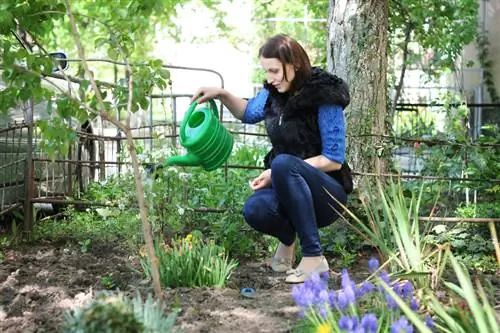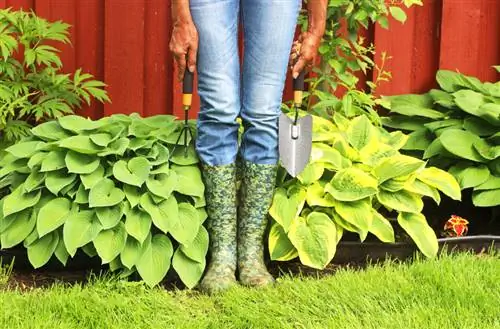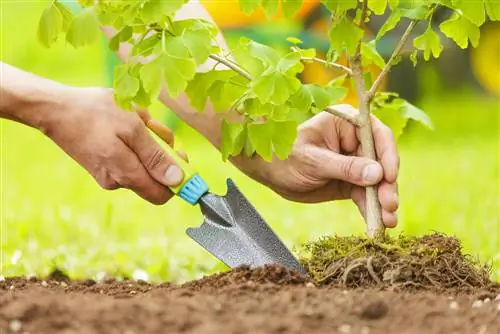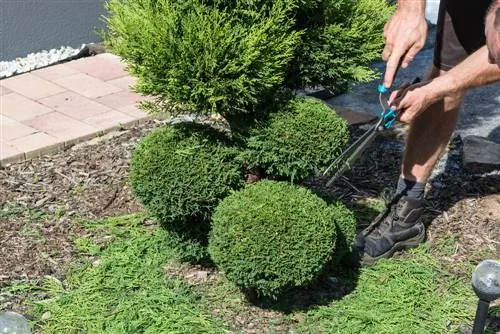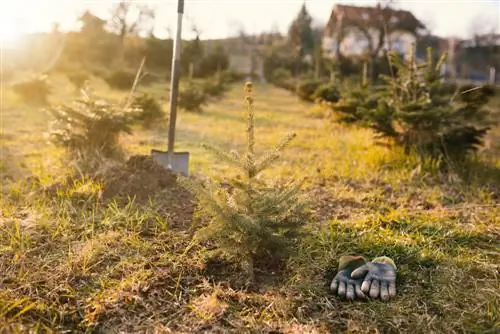- Author admin [email protected].
- Public 2023-12-16 16:46.
- Last modified 2025-01-23 11:21.
Various reasons can lead to a boxwood or even an entire hedge having to be replanted. In principle, this is also possible with old book, provided certain precautionary measures are taken.

How do you transplant a boxwood correctly?
When transplanting a boxwood, you should act in autumn or spring, carefully dig out the root area, cut back roots and shoots, dig a suitable planting hole and water it sufficiently after planting without causing waterlogging.
What should you consider when transplanting old boxwood in the garden?
Basically, it is easier to transplant young box trees - and ones that are not yet very established in their location - than old specimens that have been digging their roots into the ground for more than ten years. If you want to move such a boxwood, consider the following: (severe) pruning is essential because you will always cut and damage roots when digging. You have to compensate for this loss by shortening the leaf and shoot mass. Otherwise, the tree could dry out because the remaining roots can no longer support the above-ground parts of the plant.
When is the best time to transplant a boxwood?
The best time to transplant boxwood is early autumn. In September the great summer heat is already over, but the ground is warm and frost is still far away. The second best time is in March, as long as the temperatures are not below zero and the ground is free of frost. Here, however, there is a risk of late night frosts, which put additional stress on the newly planted box. You should avoid transplanting in summer, as this can lead to a lack of water and nutrients in the middle of the growth phase.
How do you transplant an (old) boxwood?
When transplanting the boxwood, it is best to proceed as follows:
- Dig out the root area with a spade
- Depending on the size of the book, dig a trench between 20 and 60 centimeters deep
- Diameter: approximately how wide the tree/shrub is
- Lift out the tree/shrub (e.g. with a digging fork or winch)
- Cut back the roots, leaving fine roots on the tree
- prune shoots above ground as well
- Dig planting hole at new location
- twice as big and deep as root ball
- Planting a tree vertically
Make sure not to plant the box any deeper than before. For optimal nutrient supply, you can also mix the excavated material with compost (€12.00 on Amazon) and horn shavings.
How to care for a boxwood after transplanting?
After transplanting, the boxwood needs above all an adequate supply of water. Water the plants thoroughly immediately after planting and ensure that the soil does not dry out in the following weeks. But be careful: waterlogging should be avoided because the boxwood is also very sensitive to it. Drainage is therefore essential in heavy soils. You should also spread some ripe compost in the root area.
Tip
How deep do the roots of the boxwood go?
The boxwood is a shallow-rooted plant whose roots grow wider rather than deep. In young trees they extend about 20 centimeters into the ground, in older trees up to 60 centimeters or more. Therefore, when transplanting, it is important to cut out a circle with a larger diameter in order to damage as few roots as possible.


